On the surface, the new Sony WH-1000XM5 is slimmer and more elegant than its predecessors. The sound is as convincing as ever and, in my opinion, is even slightly better than its predecessor. At the same time, you can tell that Sony is constantly working on improving the quality and ease of use of the WH-1000 series.
Sony is also making (small) progress with their outstanding noise cancelling, while the call quality during phone calls has even been significantly optimised.
With this achievement, Sony defends its market-leading role in the field of noise-cancelling headphones – even against Apple. In particular, the support of LDAC should give sound connoisseurs satisfaction. Thus, with the Sony WH-1000XM5, you acquire all-round coherent and high-quality over-ear headphones that are one step ahead of the competition. Nevertheless, the gains in the areas of sound and noise-cancelling are rather small compared to the previous models. If you own a WH-1000XM3 or WH-1000XM4, you do not necessarily need to upgrade. Nevertheless, Sony’s new top model remains my recommendation in this market segment, while its predecessors are just as attractive given the significantly lower prices.
The freshly overhauled Sony WH-1000XM5 defend their status as a top-class sounding over-ear headphone with industry-leading noise cancelling. Although the gains in the core areas compared to the previous model are rather small, there is noticeable progress in the area of call quality. With a recommended retail price of 419 euros, Sony’s new top model is not a bargain, but this is absolutely competitive among their rivals and a fantastic accessory for everyday use.

Every two years, Sony releases a new top-of-the-range headphone model that aims to win the hearts of customers as an over-ear with Bluetooth, noise-cancelling and lots of comfort features. And so it came as little surprise that Sony is now entering the fifth generation of the WH-1000XM5.
The new model comes in the environmentally-conscious recycled packaging of all new Sony products. The design of the headphones themselves has also been significantly overhauled: the over-ears now appear much slimmer, somewhat more discreet, more elegant and more refined than their predecessors WH-1000XM4. The impression of high quality is also enhanced by the matt grey or matt black housing surface, which is already familiar from their predecessors. And there are other design innovations: the earcups can be rotated but no longer folded. The foam padding with the leatherette cover is somewhat thinner than before. The headband is much slimmer, padded on both sides and, of course, adjustable in length. Finally, the package includes a decorative carrying bag, which is slightly larger than that of the previous model.
The weight is low at 250 grams and has hardly changed. The same goes for the battery life, which, according to the manufacturer, is 30 hours with noise-cancelling activated (40 hours without ANC), with a charging time of around 3.5 hours via the USB-C socket in the left earpiece. The fast charging time is impressive, providing up to three hours of playtime within three minutes. The talk time is also exemplary at 24 to 32 hours. Unlike true-wireless systems, the WH-1000XM5 can, in practice, actually be used for days.
With the new model, Sony relies on smaller dynamic drivers, which now have a diameter of 30 instead of 40 mm and work with a carbon fibre membrane. For noise cancelling, the brand’s own QN1 processor is still used and is supplemented here by an additional custom chip (V1). In terms of codecs, Sony offers the HiRes-capable LDAC format in addition to SBC and AAC but, as with the previous model, does without a licence for the aptX formats. Instead, there is Sony’s own sound enhancement DSEE Extreme.
As expected, the tried and tested “Headphones Connect” app (iOS/Android) is again used, and this allows convenient control of the comprehensive functions as well as firmware updates (firmware version 1.1.1).
In practice
For me, the Sony WH-1000XM5 offers a permanently good fit with high wearing comfort, while at the same time providing good passive attenuation – even from impact sound. My partner, on the other hand, preferred the previous version for longer listening sessions. Pairing is extremely fast and even allows two devices to be connected (multipoint), for example, to take a phone call while watching a film.
The outside of the right earcup functions as a multifunctional touch field. Double-clicking with a single finger reliably starts and pauses playback and coordinates phone calls. Your voice assistant is called up by tapping and holding the surface down. In addition, there is the so-called quick-attention mode for temporarily calling up the transparency function (see Noise Cancelling). Horizontal swiping on the touch area triggers title jumps, while vertical swiping changes the volume. All this works really well.
The lower of the two mechanical buttons on the left side serves as an on/off switch, initiates pairing and reports the battery level during operation. The second button above it is configurable and switches through the noise-cancelling modes. To this end, double and triple clicks can be configured for this button in the app.
Instead of multiple commands, Sony has been relying on automatic functions for some time. For example, music playback can be paused or even switched off when the headphones are removed. Equally clever is the Speak-to-Chat function, which interrupts music playback, switches to transparency mode and thus enables a conversation. After an adjustable time, a minimum of 5 seconds, the headphones return to their previous state.
The “Services” area is quite new: here, app-specific functions can be called up, but so far only Spotify has made use of them. The Spotify app can be opened directly with a single command without having to pick up your smartphone.
The Sony WH-1000XM5 also offer a wide range of other functions: in addition to a smartphone voice assistant, Alexa and Google can also be used for voice control – with corresponding added value. Furthermore, Google Fast Pair and Microsoft Swift Pair are supported for convenient pairing. The status announcements are available in several languages. In addition, it is possible to track your own activities and listening habits.
A significant improvement is in the call quality during phone calls. In my opinion, Sony is setting new standards here, because the voice was extracted unusually accurately and cleanly from the ambient noise with the help of two directional microphones on each side of the headphones and AI algorithms, and transmitted to the caller on the other end of the line. This feature alone makes the device we tested here the first choice for conferences and frequent phone calls.
Noise cancelling
In terms of noise-cancelling (ANC), Sony has been ahead of the game for years. So, as expected, the WH-1000XM5 also deliver truly excellent performance. The circuit uses sophisticated algorithms and multiple microphones to efficiently reduce ambient noise, especially low-frequency and static noise. But even typing noises from a computer keyboard and murmured speech, for example on the train, fade far into the background – this is exactly where the quality of the circuitry becomes apparent. To this end, Sony even automatically optimises the noise-cancelling according to the fit and air pressure of the environment, fortunately avoiding a diving bell effect.
As a result, with or without music, an impressive quiet space is created that allows you to tune out the environment while on the move but also when in the office. The noise-cancelling itself is only switchable and, unlike with some competitors, the intensity cannot be adjusted. However, I did not find this annoying, especially since the circuit was also surprisingly insensitive to wind noise and thus works well both outdoors and indoors.
The transparency function is already proven, with the microphones being used to pass ambient sounds to the drivers, enhancing interaction with the environment. The function can be called up permanently, as well as temporarily by placing the palm of the hand over the right ear cup (Quick Attention Mode) making it possible to react spontaneously. In addition, there is the already mentioned automatic function “Speak to Chat”. In contrast to noise cancelling, the level of the external noise fed in can be adjusted and channelled to voice frequencies if required.
But that’s not all: like its predecessors, the WH-1000XM5 makes use of intelligent functions. These include switching based on movement patterns (lingering, walking, running, in transport) as well as switching based on location. For each pattern and each location, it is possible to individually set an operating mode (ANC on/off, transparency mode) and even the level and focus on voices for the transparency mode. And in the meantime, the equaliser presets in the app and the Speak-to-Chat function can even be switched on at the same time.
Sound of the Sony WH-1000XM5
For those worried about the bass range given the smaller drivers, rest assured. The closed-back design still delivers bass that reaches deep down. In general, the WH-1000XM5 sound balanced and powerful across the entire frequency range. Even at medium levels, the result convinced me and provided pleasurable listening. Sitting in quiet surroundings, the sound experience was truly impressive. Rarely have I heard Bluetooth headphones that sounded so convincing.
My listening tests were carried out with an iPhone 8 and the LDAC-enabled Sony Xperia 10. It was remarkable that activated noise-cancelling had virtually no influence on the sound.
The bass was powerful and articulate. Adel Tawil’s “Katsching” impressively shows how precisely the WH-1000XM5 trace the tonality and decay of a deep 808 bass drum. There was no end of pressure here, but without any distracting boom. These Sony headphones are not slim, but they have a pleasing design, and tasteful corrections can be made in both directions via the clear bass control in the app equaliser.
Voices and acoustic instruments are reproduced reliably and authentically. The same applies to distorted guitars and dense metal mixes, which put many headphones and speakers to the test. The WH-1000XM5 did an excellent job with my test selection of AC/DC (“Fire Your Guns”), Alice in Chains (“Check Your Brain”), Meshuggah (“Bleed”) and Slayer (“Repentless”), even if the last track lacked a little transparency. Here, the integrated 5-band equaliser with additional clear bass control and two user-definable memory locations helped with a slight boost of the 6.3 and 10 kHz bands. Generally, however, this was not necessary.
The detail was lush and continued into the treble range. There were plenty of subtleties to discover here. In addition, there was a speed that supported the definition as well as the spatiality of the reproduced recordings. I did not detect any unwanted disturbing harshness.
A really good performance, which was also easily comprehensible with the AAC codec. However, as expected, the WH-1000XM5 did not achieve the lightness of open audiophile designs.
Sony delivers this thoroughly impressive sound performance in the rough and tumble of everyday life and over the air, with efficient and sound-neutral noise-cancelling always ensuring an excellent signal-to-noise ratio.
In terms of stereo and spatial imaging, the unit we tested took things up a notch compared to its predecessor. The breadth and precision of the stereo panorama and the spatial information delivered were above average for this price range.
Kraftwerk’s “Geiger Counter/Radioactivity” (3-D The Catalogue) amazed me with room-filling three-dimensionality and a wide stereo panorama with stunning dynamics. Reverb and echo effects were very well comprehensible. The same applied to “Celestion Echos” by Boris Blank and Malia: here, the Sony WH-1000XM5 succeeded in creating an enormous space, which did not however stand in the way of the delicate articulations of Malia’s voice. Even vocal doublings were clearly discernible.
Sony’s top model didn’t fluff on the dynamic level either. “Can’t Let Go” by Robert Plant and Alison Krauss reproduced a fabulous recording of a real band with a vintage sound. The same went for the purely acoustic “Strange Place for Snow” by the Esbjörn Svensson Trio with its impulsive drum and piano accents. Another positive thing that struck me during the test was how clearly the Sony headphones brought out differences between mixes – by no means something that can be taken for granted.
Readers of older Sony reviews will remember my critical remarks about the automatic sound enhancement “DSEE”. In this review, I have to revise my opinion: switching on the function gave even Tidal master files additional pressure and presence. What happens in the background remains unclear, also whether it can possibly be an intelligent loudness function. In practice, I simply liked the result better.
The WH-1000XM5 can also be operated without Bluetooth via the supplied cable. In purely passive mode, the sound was too flat and mid-rangey. This mode is more recommended as an emergency scenario when the battery is empty. By switching on the electronics, it became clear how clearly they intervene in the sound tuning. This gave the sound more foundation, fullness and breadth, and the best sound results were achieved in this active, wired mode.
Finally, Sony offers support for the “360 Reality Audio” format. For this, the manufacturer even provides its own app (360 Spatial Sound Personalizer), with which your own ears are recorded and included in the HRTF function. However, I couldn’t find more details about the optimisation. In principle, such multi-channel audio files, for example from Tidal, can be transferred to any headphones. The same applies to the Dolby Atmos format, which the WH-1000XM5 can of course also play, for example from Apple Music or in combination with Sony’s Bravia XR TV. In terms of sound, I still found the results mostly disappointing, which was probably due to the processing of the source material. Although there was an enhanced spatiality, this almost always led to a less direct listening experience.
Comparison: Sony WH-1000XM5 vs WH-1000XM4
The previous model Sony WH-1000XM4 didn’t really sound worse, nor has the noise cancelling aged. It is more the case that the WH-1000XM5 secured a small advantage in both disciplines, but this did not necessarily justify a change. Apart from the new design, the main advantage is the improved call quality. Sony has raised the retail price by about ten per cent but remains cheaper than the AirPods Max from Apple. At the same time, the prices of the two previous models have been lowered.
Technical specifications
- Ear couplingOver-ear
- Typeclosed
- Transducer principledynamic
- Frequency response (headphones)4 - 40.000 Hz
- Impedance50.8 ohms
- Sound pressure level (SPL)107.55 dB
- Pressure averaged from big and small head496 g
- Weight with cable262 g
- Weight without cable248 g
- Cable length120 cm
What's in the box
- Connection cable
- USB cable
- Bag
Special features
- Available in black and silver
- BT codecs: SBC, AAC, LDAC
- BT version: 5.2
- BT profiles: A2DP, AVRCP, HSP, HFP










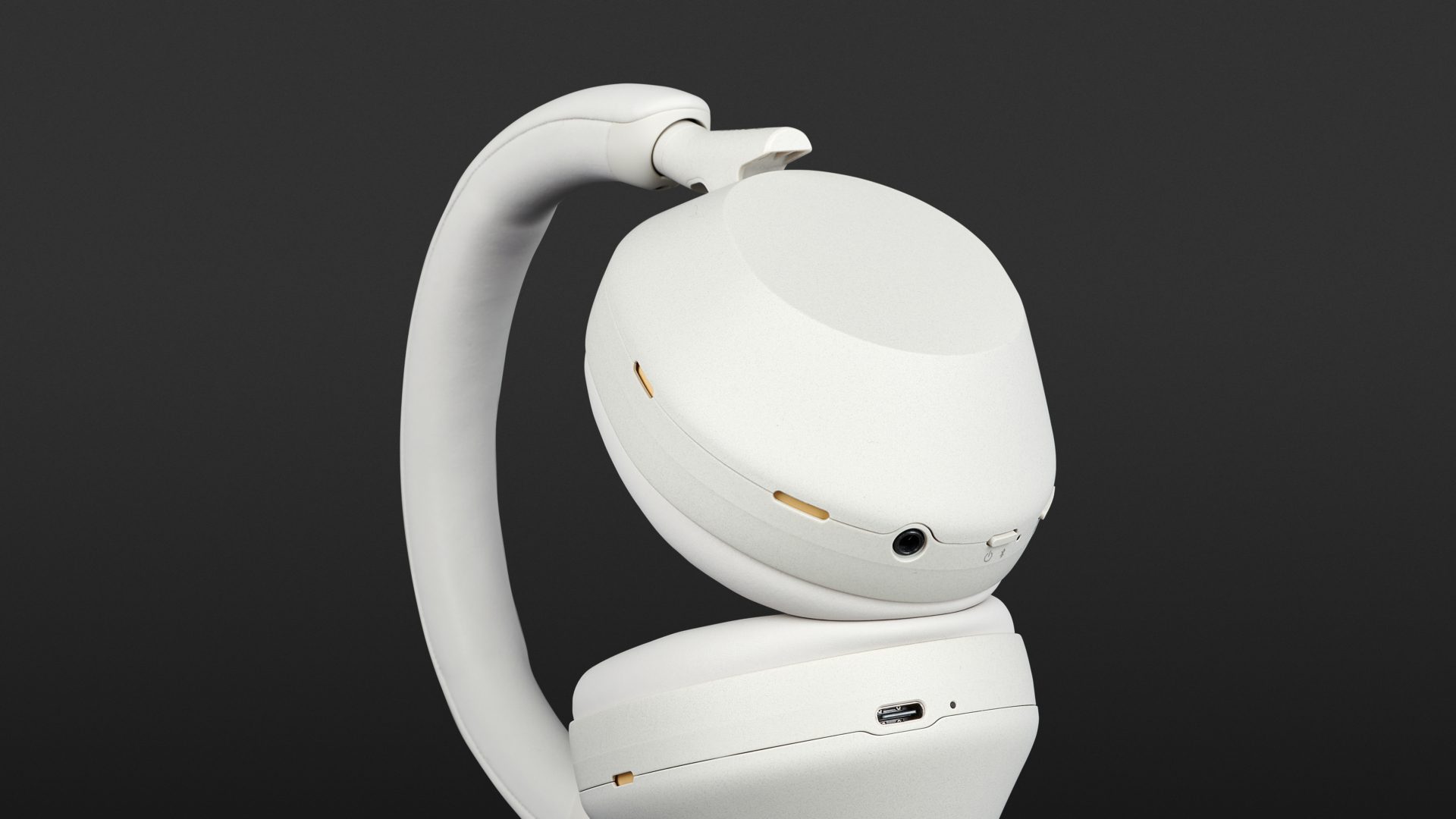

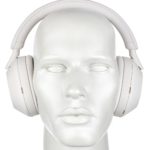
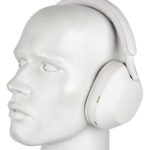
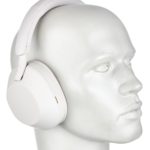


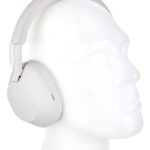





































Do you have measurement results for the headphone?
Unfortunately not yet, due to tight testing times. But we’ll make up for it in the next two weeks.
Is the product Sony WH 1000 XM5 offer a world wide guarantee? Can I buy it in USA and use in India? If so what is the guarantee if some techinal issues happens?